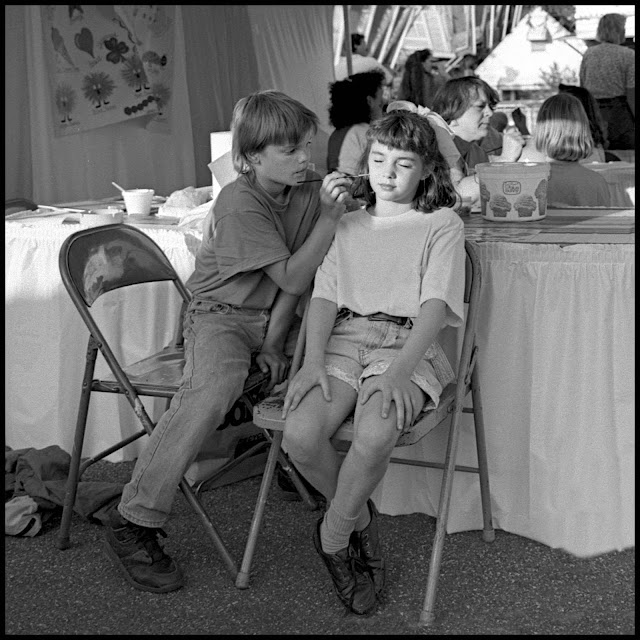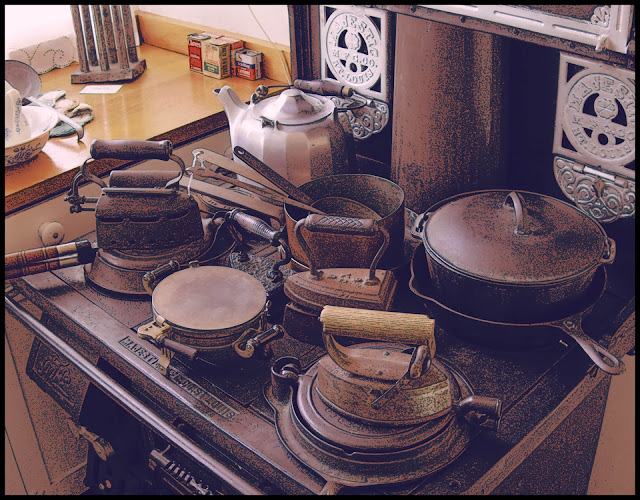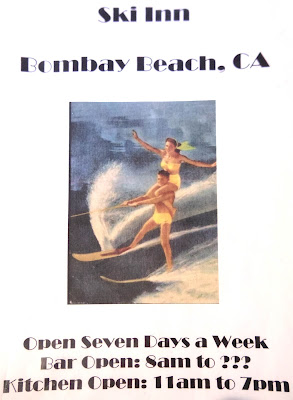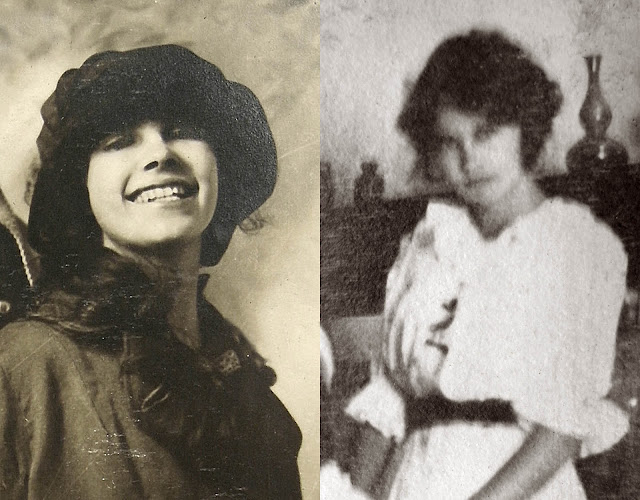by Creighton Peet
First published in The Forum, August, 1930
It appears to me that of late we have been getting pretty chummy with the music of the spheres. Thanks to the radio and phonograph, music has fallen from its high estate and has somehow got to rolling around under the chairs and tables, behind the davenport and out the window, without our paying very much attention one way or another. Easy come, easy go. We open a valve and the music comes out, just as water or gas comes out of other valves.
I do not mean to say that the radio dispense only trash, or that good music is no longer being performed. The radio, in fact, sends forth (along with its insistent banalities) some of the finest music being performed today. And this is true in spite of the fact that our newspapers, which have recently donated millions of dollars’ worth of free publicity to the radio industry, have all too frequently grown hysterical over its “cultural” aspects. One might think that a new race of supermusicians was being created by the hourly broadcasting of “
On the Road to Mandalay” and “
Mother Machree.” But, in spite of all this nonsense, the radio and improved phonograph have actually made it possible for all of us to hear some splendid things by merely turning a few little black knobs.
Music is losing its æsthetic and emotional caste because we are increasingly to confuse it with the mechanical rhythms and noises of the world in which we work and live. We turn on the music when we are at home because we are keyed up and tense — because it replaces and compensates for those rhythms and auditory stimuli which we have left behind in streets and offices.
By “mechanical rhythms” I mean mechanical intervals as well as mere noises of motor cars, subways, telephone bells, buzzers, and so on; these intervals are the periods of time during which we wait alertly for a reaction — intervals which go to make up the sum of wear and tear and general nervous dissipation.
A few of these intervals which affect us are: the time between red and green traffic lights; the interval between the picking up of the receiver and the answering of central; the interval between the opening and closing of a subway door; the interval between the placing of a piece of toast in a machine and its jumping out to be buttered and eaten while hot; and, in general, the feeling that life is short and that not merely “success” but survival are attained only by constantly leaping this way and that.
When, on returning home, we switch the radio on to “see what’s doing”, we are actually continuing the auditory and consequent nervous stimuli of our offices, subways , or factories. Just as a compressed-air worker suddenly removed from his high-pressure caisson will suffer disastrously from the change in his atmospheric environment, so do most of us, suddenly stranded in the quiet of our homes, tune up the radio to keep our nerves from quieting down. It is not so much
what the radio is playing, as is that is
is playing.
Bridge, poker, dinner, supper, a social call, or even a breakfast are enacted against an unending stream of operatic platitudes, dance orchestras, bedtime stories, and aërial playlets. People turn on the radio before they settle down to read a book, and an amazing proportion of school children prefer to do their home work with the radio going nearby. Like the water in the sink, music, divine and otherwise, runs endlessly from the loud-speaker.
Young people make love, children are spanked, families quarrel, coal is delivered, Fuller Brush men come and go, and the plumber arrives without the radio’s ceasing for one instant to dispense symphonies, jazz numbers and operetta airs in a loud tone in the living room. Some housewives claim that the radio drowns out the vacuum cleaner. Others frankly admit that their sets aren’t strong enough for that, but say that it is simply lovely for washing dishes or dusting up.
Now I am not complaining because the housewife has found a way to make her work more pleasant; I am only suggesting that the things that come from the radio matter less and less to her and to everybody else. In theory we should all be mighty grateful for these fine things, but actually an increasing number of us are using “music” as a sort of characterless stimulant. We are interested in rhythms and sounds — in the feeling of being out in the word where things are going on — rather than in what the music is saying. If peope can go about the the business of a bridge game or a new novel while the radio is working, its sounds must have the same effects as those produced by train, or a noisy office, or the rumble of an ocean liner’s engines. We learn to ignore such sounds, to talk through them and think through them.
Recently I interviewed a clublady for a magazine article while a near-by radio old me in cultured but emphatic tones that my digestive tract was in urgent need of a certain make of bran. She entirely overlooked the gentleman’s comments. She was immune to sound, vocal or instrumental. Very possibly she had turned on the radio earlier in the day to listen to some specific hour, but either all hours sounded alike to her or else one was quite as good as the next. Possibly her radio has been running all day ever since she owned it. With cheerful impartiality the radio pours for information on Brahms, bowel complaints, baby’s bath and bird lore. You take your choice, or, as this lady did, you take everything.
But I have no especial quarrel with the radio. It is not only our only source of mechanical and therefor tireless music, by any means. Recently, as a result of hitching up of the radio loudspeaker and the phonograph, we have been overrun with amplified record devices enabling one disk to come booming out of any number of rooms. Thus any institution, fro a hot dog stand to an ocean liner or a shooting gallery, can have music during as many of its twenty-fours in every day as it chooses. And about three stores in every block have installed loudspeakers which provide accompaniments for those who are forced for a few moments to forsake the home radio.
Let’s be quite snobbish and un-American for a bit and contemplate music not merely as one of the arts worthy of a more dignified setting for its understanding, but as an emotional and spiritual stimulant. Let us consider music not as a wonderful intellectual cure-all which, when taken in adequate doses by entire populations, will produce acres and acres of “cultivated” men and women of the world, but as a highly personal and rather secretive art. Let us take it out of competition with five-foot shelves, little blue pills of concentrated culture, brain-building courses and books of etiquette. Let us remember that music is not simply a “refined” art the understanding and appreciation of which supposedly go with good table manners, good breeding, and good character, but that its absorption and assimilation are among the mysterious processes the human race has yet witnessed.

As far as the general aspects of a play, a novel, or a painting are concerned, a thousand average human being will carry away much the same reactions. Their likes or dislikes, their emotional reactions and their artistic prejudices will certainly differ; but all will observe the actions of the character, the subject and colors of a painting, or the general outlines of a piece of sculpture.
Music, on the other hand, more often than not defies a complete appreciation by the layman. It is one of the most intangible and purest arts that we have produced. A march, of course, inspires movement, and a sentimental ditty affects the romantic — but because of the implication of the words rather than through the actual sounds or tones used in the song.
But in the ultimate sense music is not merely a theme song playing an accompaniment to a pictorial image. It is sheer invention on the realm of sound. By its patterns, its harmonies, its rhythms, and its subtle and infinitely changing nuances, it creates an emotional state rather than a specific picture. Music does not, as most movie-goers have been carefully taught, reach its highest development in the “1812 Overture” (which calls for bells, cannon, a burning city, and other impressive effects of light and color). Music is an entirely personal matter. Ten people sitting in a row go home with ten different reactions — ten different conceptions of what the composer was attempting to convey.

Obviously this is true only if music is listened to with some attention. Bach or Brahms will be just so much noise and nuisance if they have to compete with a roomful of ladies at their Thursday afternoon bridge; the ladies will quickly turn to a program of dance music, which is especially devised and executed to be ignored while furnishing the necessary pleasing auditory stimulation. The intricate beauties of Brahms require unflagging mental attention.
Now possibly our generation, our high-pressure cities, the lack of privacy in our communistic apartment houses, and our enforced scramble to earn, not enough for luxuries, but for mere necessities, will not allow us to indulge in anything so deliberate as contemplation — unless we go to a concert hall where we may sit in quiet and peace only because we have paid for that quiet and peace.
But when the orchestra is miles away, it can be (and usually is) tuned down to become an accompaniment to conversation or cards. Even in the case of those who might actually want to listen to the radio’s symphony, there are all sorts of distractions. The radio is right in the room: if we have anything else to do — housework, papers to go over, or guests to entertain — it is simpler to do these things while listening to the concert. The same instinct which attracts us to a machine which performs three or four functions at once attracts us to serious music in the home. No more wasting of time in concert halls. No idle hands. No idle brains. Again we are carrying office efficiency over into our music. Anyone who has ever tried to play a radio or phonograph on a summer’s night (whether within the city or country) when windows are open and fancies are free, must realize that “music” is a sort of auditory free-for-all, with with each apartment or cottage contributing its own private version.
It is then, not so much as familiarity breeding contempt, as of music’s becoming a sort mechanical accompaniment to our daily lives — a nervous stimulant.I suppose we should all be bigger and better citizens and have nobler tempers for doing everything in a musical entourage. Soldiers march better and factory workers are speeded up by a fast tune. But although music for marching or working certainly has its uses, its constant performance at all ours must ultimately stupify and stultify our capacity for more subtle enjoyments.

One may, of course, take the view that Beethoven played through the loud-speakers beside an amusement park pool (which I can vouch for) is going to give the boys and girls splashing about a preference for better music; but I am afraid this is an idle hope. Music takes listening to. People immersed in water, conversation, or bridge are more concerned with the matter of survival and the immediate physical efforts involved therein, than in some pleasant sounds issuing from a machine.
Never have so many of us be able to listen to fine music — and never has this music been in so much danger of being used as mere atmosphere. Music is in every home, but what of it? So are water, gas, and electricity — and we accept them all unquestioningly. Music is now more of a public utility than an art, and as such it is rapidly losing its dignity, its power,, and its ability to say beautiful things.
Batty’s note: This was written when widespread broadcast music was less than ten years old. I can't even begin to imagine what the author would think of the modern world!




















































